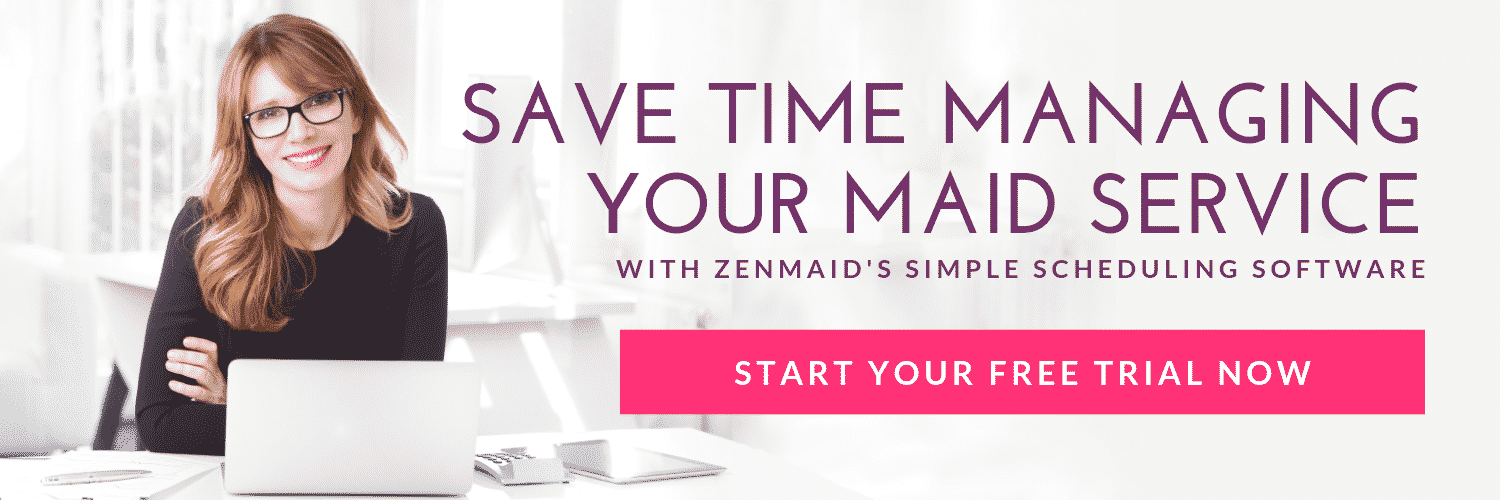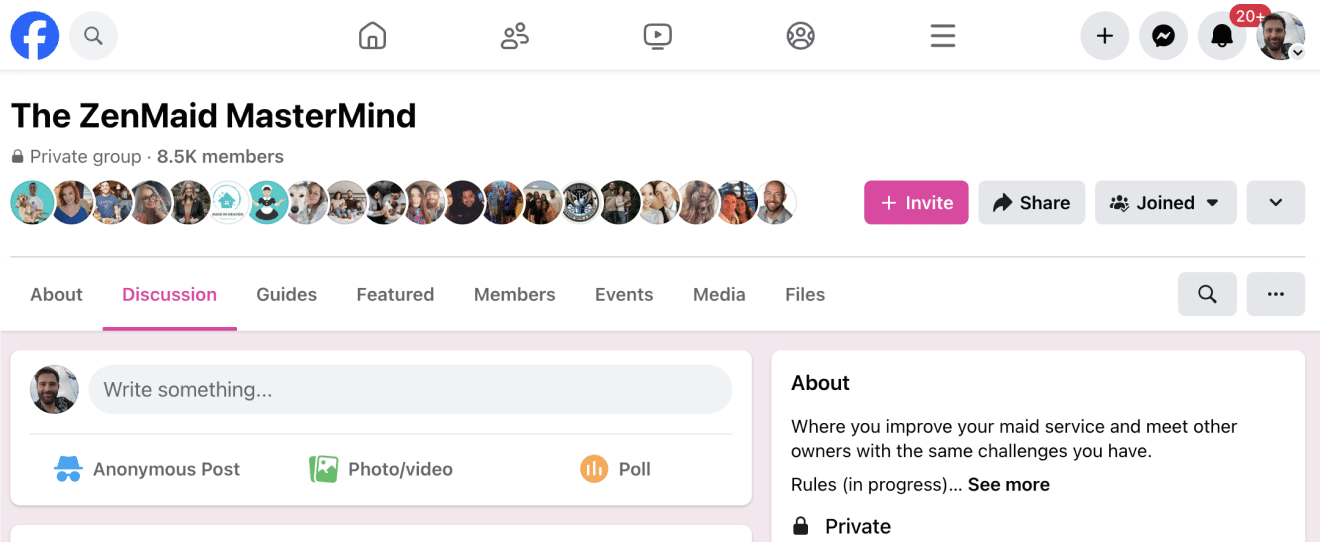As the world shifts around us, cleaning companies (like many other companies) are being forced to change the way they do business. While the cleaning industry can’t go fully remote like other industries, there are ways to prioritize safety, health, and distance in your maid service.
In a post-Covid-19 world, clients are more cautious about who they let into their homes. Customers want to minimize exposure, spread, and contamination by carefully vetting the people around them.
Customers are looking for security and consistency. They want to be able to count on the same cleaner, who knows their home and their needs. They’re also looking for cleaners who can be in and out of their home more quickly and who can get the job done as efficiently as possible.
This creates a perfect storm of needs that is pushing cleaning businesses to switch up their operational models in favor of leaner, solo teams rather than multi-cleaner teams.
Let’s talk about what it means to implement a solo-team business model and how it will benefit the longevity of your cleaning business.
Table of contents
The benefits of using solo cleaning teams
It’s common for business owners to fixate on ways to make the company bigger. But growth can come in many different ways. Rather than focusing on how to make the company bigger by hiring more people and growing the team, maid service owners need to find ways to operate as efficiently as possible in a way that makes your clients feel safe and cared for.
Here are a few ways that using solo cleaning teams can benefit cleaning businesses and help them grow.
Create a sense of safety and security with customers
Solo teams can reduce the amount of contact with customers and their homes. This is something that many homeowners are worried about when it comes to hiring a cleaner these days.
When your cleaners work in teams, it means customers are allowing more people into their homes. This might pose more of a risk to customers practicing social distancing or minimizing contact with people outside of their immediate social circle.
Can build closer relationships with customers and better retention
When a customer has one dedicated cleaner from your team that they can count on, you’ll build stronger relationships with your clients. This will lead to higher client retention, because the customer will feel secure and safe, working with the same cleaner every time.
Customers will also be more willing to refer your cleaner to their friends and family, because they are comfortable with the relationship.
Solo workers get the job done faster
It might seem counterintuitive that one person gets the job done quicker than multiple people. But with the right team members who work better alone and enjoy operating as an individual, rather than on a team, they will be more efficient working alone.
It will also make for fewer distractions on the job. Each solo cleaner will be responsible for their own repeatable process that isn’t dependent on having another person with them.
Reduced costs
Streamlining your team will reduce your labour costs. Because even though you might be hiring higher-paid A-players, there will be fewer team members, which means a reduction in the cost of supplies and labor overall.
How to make solo teams work
Now that you know some of the benefits of using solo teams, let’s talk about a few ways to implement a solo-team structure into your cleaning business.
Create a cohesive plan before you get started
Map out how you will implement a solo team strategy into your current business. Write down all of your business goals and potential ways that solo teams can help you achieve those goals. During this process, talk to your team about the plan to better understand who wants to work solo.
Sell the concept of the solo model to your team
At first, your employees might not fully understand why you want to use a solo cleaning model. It’s important to sell the idea as something that will benefit the company as a whole. You need to convey the value of this model to them in a way that also helps them understand how it will play a role in their growth within the company.
This is where sharing some bigger company goals and objectives might help bring your team on board. If they can see the intention behind the switch, it can help them understand how solo teams will benefit them, the customers, and the company as a whole.

Commit to testing the new model and finding ways to make it better
For the solo model to work, you need to go all-in for at least three months to give yourself time to optimize it for your specific business. You also need to give your employees a chance to get used to the new model and learn how to make the system work for them and their cleaning style.
To start, you can design a beta or pilot program to test this model with the team members you think are the best fit.
Find people who want to work solo
Solo cleaners will need to have a specific set of skills in addition to their skills as a cleaner. They need to be trustworthy, accountable, teachable, and hungry. You need the right people to minimize turnover and get the full benefits of solo teams.
It’s important to learn about your cleaners to find out who enjoys working autonomously and are interested in working solo. When switching to a solo model, you need to find employees who thrive when working alone. These employees need to have higher accountability levels and be willing to take a sense of ownership over each client.
Adapt to your employees’ needs
Once you choose your solo cleaning team, try to adapt your business to meet their needs, and solve their problems. It’s important to nurture the relationship with your team just as much as you do with your clients.
Your cleaners can’t get the job done if they aren’t supported. In addition to providing them with the tools they need to complete each cleaning, make sure that you give them proper equipment to keep themselves safe as well. This will help you retain them as employees and provide you with peace of mind that you are doing what you can to keep them safe and healthy.
Using the ISO model system: What is it and how it can optimize solo teams
In Ken’s experience, the businesses that switched to a solo team model experienced a 5-15% boost in profits in the first few months of getting started. He estimates the potential for up to 80% increases in cleaning efficiency and profits by optimizing the cleaning business for solo teams using his ISO model.
So what is this model, and how can you begin implementing it right now? You can start by using these three steps:
- Initialize
- Stabilize
- Optimize
Initialize
The initial process of implementing a solo team mode is to get the right people on board. You need solo cleaners that think like a business owner but desire job security. These team members don’t want the headaches or stress of owning a business but desire to take more ownership over the job they’re doing.
In addition to being trustworthy and teachable, they also need to develop a pull marketing system by bringing prospects up the trust curve. This increases the demand for your services and increases your revenue per client.
Stabilize
For a solo-team to thrive, you need to stabilize your core business. This means learning the science and art of cleaning to increase your trust further. Everyone in your business, including your sales and marketing team, trainers, and solo cleaners, become cleaning specialists and experts in the industry.
This increases your perceived value and revenue per client. It also teaches your solo cleaners how to get faster at their jobs by learning all of the best techniques and strategies.
Optimize
Lastly, you need to optimize your business to maximize the effectiveness of your solo cleaners. To do this, make sure that each cleaner has their own set of clients, and they understand how important it is to build trust with them.
In addition to building trust, they need to use their skills to provide top-level service every time and learn what their clients are looking for in each cleaning.

Take action
Once you decide you want to start using solo-cleaning teams, take rapid actions. Don’t just plan and talk about it. Move quickly to test it and see if it works. It’s not an easy change, but you won’t know if it will work until you do it. It’s crucial to get quick wins and communicate them to your team to win their support.
During the testing phase, remain optimistic, flexible, and patient and try not to put unnecessary pressure on your cleaners as they learn to navigate this new business model.
Even in “normal” times, businesses need to be ready to adapt to change. The world is changing, and your standards as a cleaning company need to be higher to retain customers.
Cleaning businesses now have to deal with unprecedented circumstances. They are being forced to fine-tune their business models to cater to their customers and find new ways to stay profitable.
By switching to a solo-team model, your business can streamline its operations, and increase revenue while decreasing labor costs, and giving clients the safety and reassurance they’re looking for.
You can learn more about the steps to take to implement a solo-team maid service by watching Ken’s full talk from the 2020 Maid Summit and checking out his Solo Cleaning School.
About the presenter
Ken Carfagno is a former General Electric Mechanical Engineer turned cleaning business owner, who is now helping other maid service owners streamline their cleaning business with solo-teams. His Solo Cleaning School helps maid service owners create lean, mean solo cleaning teams that increase profitability and efficiency.
This talk first aired at the 2020 Maid Service Success Summit.
The Maid Summit is an annual online event that brings together the most successful leaders in the cleaning industry, like Debbie Sardone, Angela Brown, Courtney Wisely, Amy Caris, Chris Schwab and more. Get free access to masterclasses and workshops that will help you to grow, scale and automate your cleaning business so you can get more leads and create more profit. Make sure you’re on our email list to find out how to get free tickets to the next event.
If you found this article helpful, you may also like:
- NEW: Schedule Smarter with ZenMaid’s Availability Feature
- The Exact Lead Management System I Use in My Cleaning Business
- Filthy Rich Cleaners Podcast E29: How She Merged With Her Competitor and Built a Cleaning Empire Together
- Filthy Rich Cleaners Podcast E28: How Much Does a 7-Figure Business Owner Take Home? + More Juicy Q&A’s
- Filthy Rich Cleaners Podcast E27: The Lead-Converting Marketing Secrets Most Cleaning Businesses Get Wrong

 Frustrated with your scheduling? Try the easiest-to-use calendar app, made by and for maid service owners.
Frustrated with your scheduling? Try the easiest-to-use calendar app, made by and for maid service owners.









